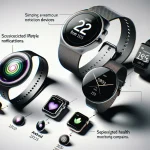
Estimated reading time: 10 minutes
Key Takeaways
- Direct Brain Communication: Brain-Computer Interfaces (BCIs) enable direct interaction between the brain and external devices.
- Types of BCIs: There are invasive and non-invasive BCIs, each with unique advantages and challenges.
- Medical Transformations: BCIs are revolutionizing medical treatments, especially for patients with paralysis.
- Future Innovations: Ongoing research promises advancements in both medical and consumer BCI applications.
- Ethical Considerations: Addressing technical hurdles and ethical issues is crucial for BCI development.
Table of Contents
Understanding Brain-Computer Interfaces
Picture controlling a computer with your thoughts alone. This isn't science fiction – it's the reality of brain-computer interface technology. A brain-computer interface (BCI) creates a direct connection between your brain and external devices, opening new possibilities for human-machine interaction.
BCIs capture brain signals, interpret them, and transform them into commands that control computers, prosthetic limbs, or other devices. This technology helps people with severe disabilities regain independence and creates innovative ways for anyone to interact with technology.
What Makes BCI Technology Work?
At its core, BCI technology functions as a translator between your brain's electrical signals and computer commands. The process involves three key steps:
- Signal detection from the brain
- Processing and interpretation of these signals
- Converting signals into device commands
Two main types of BCIs exist:
Invasive BCIs
These systems involve surgical implantation of electrodes directly into the brain tissue. While they provide extremely precise signals, they carry surgical risks and require careful medical oversight.
Non-invasive BCIs
These use external sensors, typically in the form of EEG caps or headsets, to detect brain activity through the skull. They're safer and more accessible but offer less precise control.
Current Applications Transforming Lives
Medical Breakthroughs
BCIs help patients with paralysis communicate and control assistive devices. People who've lost mobility can operate prosthetic limbs or communicate through computer interfaces using only their thoughts.
- Restoring movement control in paralyzed individuals
- Enabling communication for locked-in syndrome patients
- Supporting rehabilitation after stroke
Research and Development
Scientists use BCIs to:
- Study brain function and neural patterns
- Develop new treatments for neurological conditions
- Create more intuitive human-computer interactions
The Future of BCI Technology
Innovation in BCI technology continues at a rapid pace. Researchers and companies work on:
Medical Advances
- More precise neural interfaces for improved control
- New treatments for neurological conditions
- Enhanced rehabilitation techniques
Consumer Applications
- Gaming and virtual reality control
- Smart home device operation
- Improved accessibility tools
Challenges and Considerations
While BCI technology shows immense promise, several challenges require attention:
Technical Hurdles
- Improving signal accuracy and reliability
- Developing longer-lasting implants
- Creating more user-friendly interfaces
Ethical Considerations
- Protecting neural data privacy
- Ensuring equitable access to technology
- Addressing potential misuse concerns
Getting Started with BCIs
For those interested in exploring BCI technology:
- Research available consumer BCI devices
- Follow developments from leading companies
- Consider participating in research studies
- Join BCI communities and forums
The Road Ahead
BCI technology represents a significant leap forward in human-computer interaction. As research continues and technology improves, we'll see more applications emerge across healthcare, entertainment, and daily life. The key lies in balancing innovation with ethical considerations and ensuring this transformative technology benefits society as a whole.
Want to learn more? Connect with BCI research organizations, follow technology news, or explore consumer BCI devices. The future of direct brain-computer communication is unfolding now, and you can be part of it.
Frequently Asked Questions
What is a Brain-Computer Interface (BCI)?
A Brain-Computer Interface is a technology that enables direct communication between the brain and external devices, translating neural signals into commands for computers or prosthetics.
How do invasive and non-invasive BCIs differ?
Invasive BCIs require surgical implantation of electrodes into the brain for precise signals, while non-invasive BCIs use external sensors like EEG caps, offering safer but less precise control.
What are the current medical uses of BCIs?
BCIs are used to help paralyzed patients communicate, control prosthetic limbs, and assist in rehabilitation after neurological injuries like strokes.
What ethical considerations are associated with BCI technology?
Ethical considerations include protecting neural data privacy, ensuring equitable access, and preventing potential misuse of technology.
How can I get involved with BCI technology?
You can start by researching consumer BCI devices, following industry developments, participating in research studies, or joining BCI-focused communities and forums.









